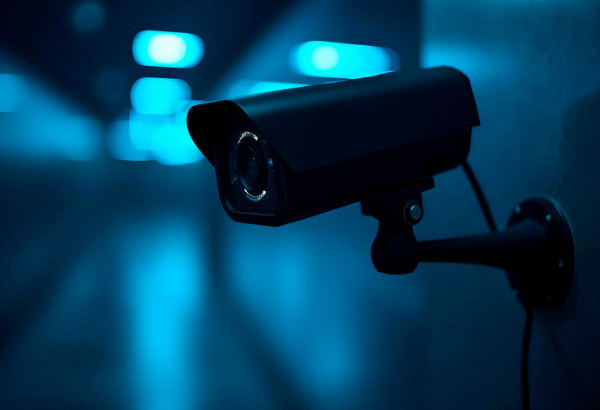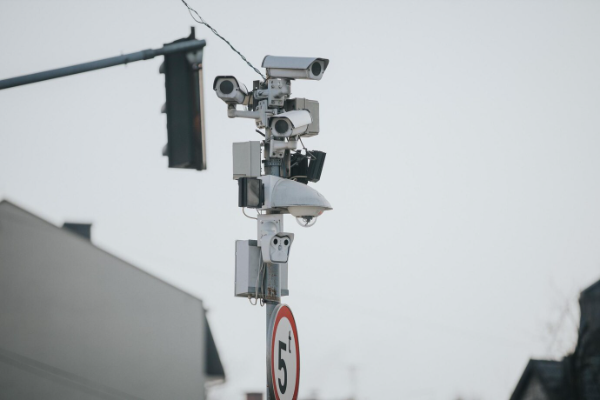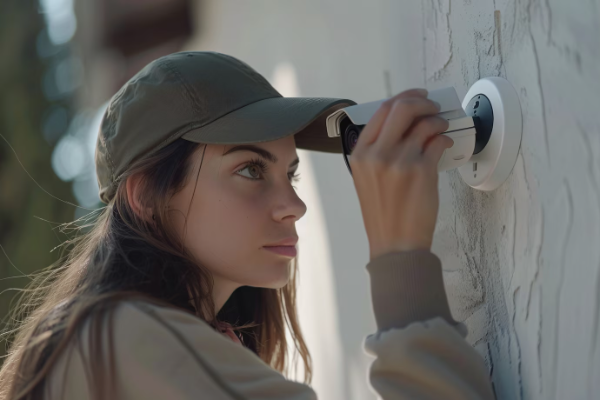In an era where security is paramount, night vision CCTV systems are no longer just an add-on but have become an essential component of modern security infrastructure. As criminal activity often occurs at night or in low-light conditions, night vision technology - often embedded within a low light security camera - is crucial for maintaining 24/7 surveillance capability. This article will dive deep into how cutting-edge night vision cameras and the latest night vision security camera innovations work in 2025, explore the latest technologies being deployed, and highlight key factors to consider when selecting a system that meets your specific needs—whether for home use, small businesses, or large organizations.

How Does Night Vision CCTV Technology Work?
Infrared (IR) - The Heart of Night Vision
Infrared technology (IR) forms the foundation of most night vision CCTV cameras. The principle involves emitting light in the infrared spectrum, which is invisible to the human eye, but can be detected by special sensors in the camera and converted into visible images.
Interestingly, in 2025, IR technology has advanced significantly with the implementation of Smart IR technology, which automatically adjusts the intensity of IR light based on the distance of objects. This prevents overexposure when objects move closer to the camera or underexposure when they are far away.
Additionally, there's been development in No-glow IR technology that prevents infrared LEDs from emitting visible red light, making cameras more discreet. This is particularly useful for covert security operations or wildlife observation.
Starlight or Ultra Low-Light Technology
Starlight technology has revolutionized the CCTV industry in recent years, but 2025 has seen it evolve even further. The latest Starlight cameras use ultra-sensitive sensors combined with high-quality lenses and advanced image processing technology to capture detailed, colorful images even in extremely low light conditions, such as starlight or minimal moonlight.
What's amazing is that the latest 2025 Starlight cameras can record color images in light conditions as low as 0.0005 Lux, compared to older models that required 0.005 Lux—representing a 10-fold improvement in light-gathering capability.
Hybrid Technology - The Perfect Combination
Hybrid systems represent the latest innovation combining multiple technologies. Hybrid cameras automatically switch between operating modes:
- 1. Normal color mode when sufficient light is available
- 2. Starlight mode when light levels begin to drop
- 3. IR mode in complete darkness
Moreover, the latest hybrid technology in 2025 incorporates AI systems that help determine which mode should be used in different situations and optimize image processing in each mode for the best possible results. This is technology not available in older cameras and represents a significant advantage in 2025.
Thermal Imaging Technology
Thermal cameras have also seen continuous development. Rather than relying on light, these cameras detect temperature differences between objects and their environment, allowing them to see in complete darkness, fog, smoke, or even through light foliage.
The latest innovation in 2025 is Deep Fusion technology, which combines images from thermal and conventional cameras, resulting in images that contain both object details and thermal differentiation. This helps more accurately identify people or objects even in challenging conditions.

Types of Night Vision CCTV Cameras
Outdoor CCTV Cameras
Outdoor cameras must withstand harsh weather and environmental conditions. In 2025, special nano-polymer materials have been developed that are not only resistant to water and dust (IP67 rating or higher) but also feature self-cleaning capabilities when exposed to rain and anti-dew systems to prevent condensation on the lens, ensuring clear images even in adverse weather conditions.
Additionally, modern cameras now incorporate sophisticated passive cooling systems that allow operation in temperatures ranging from -40°C to 70°C without requiring fans or moving parts that could fail over time.
Indoor CCTV Cameras
For indoor applications, compact size and aesthetic design that blends with interior décor are important. The latest indoor cameras in 2025 feature sleek designs and significantly reduced sizes, with some models as small as 2x2 centimeters while still delivering 4K image quality.
Furthermore, Micro-LED technology has made IR lights smaller and more energy-efficient, allowing newer indoor cameras to operate for up to one year on a small battery, ideal for installation in locations where running power cables is impractical.
PTZ (Pan-Tilt-Zoom) Cameras
PTZ cameras can pan, tilt, and zoom, offering high flexibility in surveillance. In 2025, PTZ cameras come equipped with AI-powered auto-tracking technology that can identify and follow people or vehicles with precision, even in low-light conditions.
The latest innovation is the Dual-sensor PTZ featuring both conventional and thermal sensors in a single unit, enabling object tracking even in challenging environments such as dense fog, thick vegetation, or complete darkness.
Key Features to Consider When Choosing Night Vision CCTV
Resolution and Image Quality
Resolution significantly impacts image detail. In 2025, the standard resolution for high-end CCTV cameras is 8K (7680×4320 pixels), although 4K (3840×2160 pixels) is sufficient for most applications.
However, high resolution doesn't necessarily guarantee better night vision. Pixel size is actually more important—sensors with larger pixels (e.g., 2.8µm or larger) can gather more light and deliver better night-time image quality, even at lower resolutions.
IR Range
IR range indicates the maximum distance at which the camera can see in darkness. In 2025, premium cameras can illuminate objects at distances of 200 meters or more using Array IR technology that employs multiple LEDs with different illumination angles.
Additionally, there's been development in Beam Forming IR technology that can direct IR light intensity to specific areas of interest, saving energy and enhancing long-range visibility.
Light Sensitivity and Sensors
Light sensitivity, measured in Lux, indicates the minimum amount of light a camera needs to capture quality images. Lower Lux values are better.
In 2025, the latest sensors use Quantum Dot technology and Backside Illumination (BSI) that increase light-capturing efficiency by up to 300% compared to conventional sensors, allowing operation in extremely low light conditions (0.0001 Lux or lower) without relying on IR illumination.
AI and Video Analytics
Artificial Intelligence (AI) plays a crucial role in modern CCTV systems. AI technology can:
- Enhance image quality automatically in low-light conditions, reducing noise and increasing sharpness
- Identify and classify objects, distinguishing between people, animals, or vehicles even in low light
- Detect suspicious behavior such as intrusion, fence-climbing, or unusual movements
- Perform facial recognition even in low-light or dark conditions
The latest innovation in 2025 is Edge AI that processes everything within the camera itself, eliminating the need to send data to servers, resulting in faster response times and enhanced security.

Special Features
- Noise Reduction
Low-light images often contain high levels of noise. In 2025, advanced 3D-DNR (Digital Noise Reduction) technology uses deep algorithms to analyze multiple frames and eliminate noise without sacrificing important details.
- Wide Dynamic Range (WDR)
WDR allows cameras to capture both brightly lit and dark areas within the same frame, which is particularly useful for locations with uneven lighting, such as building entrances with bright exteriors and dark interiors.
In 2025, HDR+ (High Dynamic Range Plus) technology with a dynamic range of up to 150 dB helps reveal details in both extremely bright and completely dark areas of the same scene.
- Communication and Connectivity
Wireless connectivity standards have advanced significantly by 2025. Wi-Fi 7 and 5G-Advanced provide sufficient bandwidth for transmitting high-quality video from multiple cameras simultaneously.
Additionally, Mesh Network technology allows cameras to connect to each other and relay data, even in locations where wireless signals might not reach directly.
Installation and Optimization
Optimal Positioning
Selecting the right installation position is crucial for maximizing the performance of night vision CCTV cameras:
- - Avoid direct bright lights - Car headlights or street lamps shining directly into the camera can cause IR bounce-back and overexposure
- - Avoid reflective surfaces - Mirrors and glass can reflect IR light back to the camera, causing overexposure
- - Consider desired range - Position cameras at distances appropriate for their IR illumination capability
- - Check for obstructions - Trees or structures that might grow or change in the future could block the camera's view
The latest technology in 2025 includes AR (Augmented Reality) applications that help plan installations by simulating camera views at night before actual installation.
Maintenance and Cleaning
Night vision CCTV cameras require special maintenance, particularly when installed outdoors:
- - Regularly clean lenses and IR lights: Dust or debris on lenses or IR lights can significantly reduce performance
- - Check for water or moisture: Even with waterproof ratings, seals and potential leaks should be inspected regularly
- - Inspect connections and cables: Check for damage from rodents or weather conditions
Newer camera models in 2025 come with self-diagnostic systems that can detect issues and alert users before equipment fails.

Privacy and Legal Considerations in the United States
When using CCTV cameras in the United States, it's essential to consider laws and regulations regarding privacy, which can vary significantly by state and locality:
- Federal Video Voyeurism Prevention Act - Prohibits recording in areas where people have a reasonable expectation of privacy
- State-specific regulations - Many states have their own CCTV and surveillance laws that may be more restrictive than federal laws
- Notice requirements - Some states and municipalities require visible signs indicating video surveillance is in use
- Audio recording restrictions - The federal Wiretap Act and many state laws impose strict limitations on audio recording without consent
In residential settings, consider:
- Homeowners Association (HOA) rules - May restrict camera placement or usage
- Neighbor privacy - Avoiding recording neighboring private property
- Consent laws - Some states require one-party consent, while others require all-party consent for recording
For businesses, additional considerations include:
- Employee privacy laws - Restrictions on monitoring in break rooms, bathrooms, or changing areas
- BIPA compliance - The Biometric Information Privacy Act in Illinois and similar laws in other states regulate the collection of biometric data, including facial recognition
- Data storage and protection - Requirements for securing and handling surveillance footage
In 2025, new Automated Privacy Protection Technology can detect and blur faces of individuals who have not provided consent or exclude private areas from recording. Some sophisticated systems feature AI-driven compliance monitoring that automatically ensures adherence to applicable privacy laws based on the camera's location.
Additionally, many modern CCTV systems now integrate with Privacy Management Platforms that help organizations maintain compliance with the growing patchwork of state-level privacy laws, such as the California Consumer Privacy Act (CCPA), Virginia Consumer Data Protection Act (VCDPA), and similar regulations in Colorado, Connecticut, and other states.
FAQ on Night Vision CCTV

- Q1: How far can night vision CCTV cameras see?
A1: Modern night vision cameras can see anywhere from 30 feet to over 650 feet (10-200 meters) in darkness, depending on the quality and technology used. Premium models with advanced IR arrays can reach even greater distances. - Q2: Do all night vision cameras record in color?
A2: No, not all night vision cameras record in color at night. Traditional IR cameras typically produce black and white images in darkness. However, modern Starlight technology cameras can maintain color imaging in extremely low light conditions, and the latest hybrid models switch between color and black-and-white depending on available light. - Q3: Can night vision cameras see through walls?
A3: No, standard night vision CCTV cameras cannot see through walls, regardless of their quality. They can only capture what would be visible with sufficient lighting. Thermal cameras can detect heat signatures through very thin materials but not through standard walls. - Q4: How long do night vision cameras last?
A4: With proper maintenance, quality night vision CCTV cameras typically last 5-10 years. The latest models with passive cooling systems and weatherproof designs tend to have longer lifespans, often with 7-10 year warranties. - Q5: Can night vision cameras work during the day?
A5: Yes, modern night vision cameras are designed to work in all lighting conditions. They automatically switch between day and night modes. The latest models feature advanced HDR technology to handle challenging lighting situations like direct sunlight and shadows in the same frame. - Q6: Is it legal to install night vision cameras on my property?
A6: Generally, it's legal to install night vision cameras on your own property in the United States, but you must ensure they don't record areas where people have a reasonable expectation of privacy, like into neighbors' windows or doors. Always check local laws, as regulations vary significantly between states and municipalities. - Q7: Do night vision cameras need internet connection?
A7: Not necessarily. While many modern cameras offer cloud connectivity and remote viewing via the internet, standalone systems that record to local storage devices can function without internet access. However, internet connectivity enables remote viewing, notifications, and backup options. - Q8: How much power do night vision CCTV cameras consume?
A8: Power consumption varies widely based on features. Basic cameras might use 3-5 watts, while advanced models with heaters, IR illuminators, and PTZ functions can use 10-20 watts or more. The latest energy-efficient models have reduced consumption by up to 40% compared to older versions, and some indoor models can run on batteries for extended periods. - Q9: Can weather affect night vision camera performance?
A9: Yes, extreme weather conditions can impact performance. Heavy rain, fog, or snow can reduce visibility and IR range. However, the latest models with enhanced weather resistance, anti-fogging technology, and adaptive IR systems are designed to minimize these effects and maintain clear images in challenging conditions.
Recommended Reading
When selecting a night vision CCTV system, image resolution plays a crucial role in capturing fine details in low-light conditions. To better understand the differences between 1080p, 4K, and 8K resolutions, check out our guide: Best CCTV Camera Resolutions: 1080p, 4K, and 8K Explained
Knowing how a CCTV camera is built—from its image sensors to IR emitters—can help you make smarter decisions when choosing a system for night surveillance. Learn more in our detailed breakdown: What are the components of a CCTV camera?
Protect Your Business with Trusted Security Solutions
At Visioneers, we specialize in delivering end-to-end security systems for businesses across the Bay Area — including Alameda, Oakland, San Francisco, and San Diego. Whether you need access control, remote video monitoring, or reliable alarm systems, we tailor every solution to fit your unique needs.
Why Choose Visioneers?
- ✅ Competitive Pricing – Get top-tier protection without breaking the bank.
- ✅ Flexible and Responsive – We adapt quickly to your needs with 24-hour turnaround support.
- ✅Personalized Service – Your security is not one-size-fits-all. We design systems that work for you.
Ready to take the next step?
Contact us today for a free consultation and discover how Visioneers can help secure what matters most.
